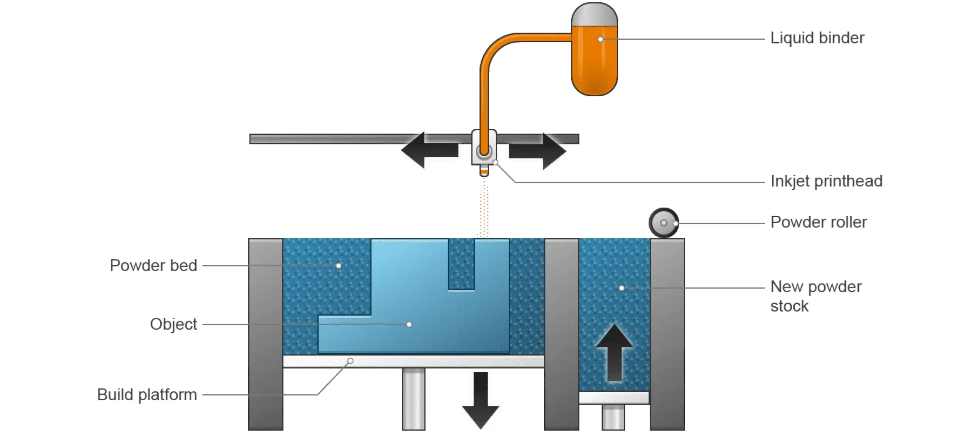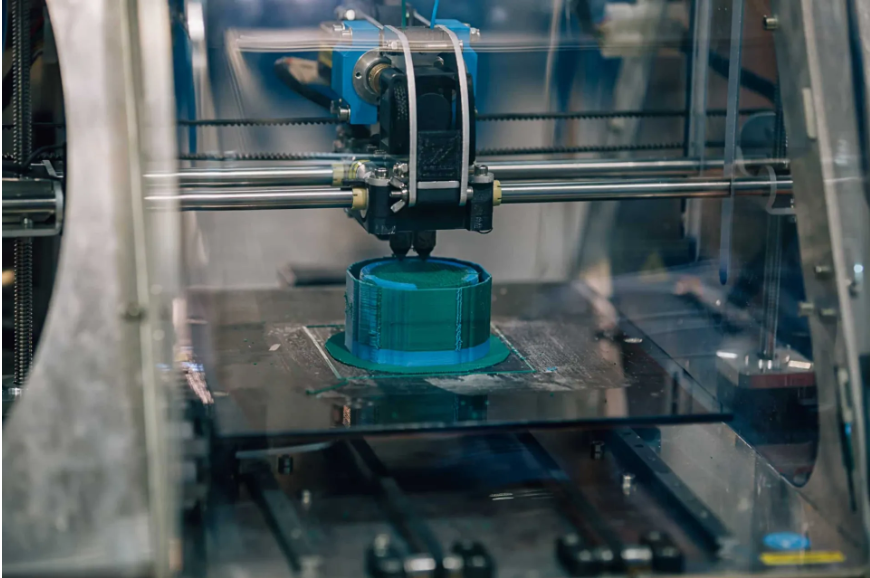In the ever-evolving landscape of 3D printing, Binder Jetting (BJ) stands out as a versatile and innovative technique. This method, which involves the deposition of an adhesive binding agent onto layers of powdered material, has gained traction across various industries for its unique capabilities. In this blog post, we’ll explore the Binder Jetting process, its materials, applications, and advantages, helping you understand why it might be the right choice for your next project.
What is Binder Jetting?
Binder Jetting is a 3D printing technique that utilizes a print head to deposit a binding agent onto thin layers of powdered material. The process is akin to traditional inkjet printing, where ink is applied to paper. In Binder Jetting, however, the materials used can be ceramic-based (such as glass or gypsum) or metal (like stainless steel).


The Process
- Layering: The process begins with the build platform, where a layer of powdered material is spread evenly across the surface.
- Binding: The print head moves across the platform, depositing droplets of binder onto the powder in a predetermined pattern, effectively “printing” the first layer.
- Lowering: Once a layer is complete, the build platform lowers slightly, and a new layer of powder is spread over the previous one.
- Repeating: This layering and binding process continues until the entire part is built.
- Post-Processing: After printing, the parts are in a “green” state, meaning they are not yet fully finished. To enhance their mechanical properties, an infiltrate substance—such as cyanoacrylate adhesive for ceramics or bronze for metals—is often added. Alternatively, the parts can be sintered in an oven to fuse the grains of material together.
Applications of Binder Jetting
Binder Jetting is particularly well-suited for applications that prioritize aesthetics and form over functionality. Some common uses include:
- Architectural Models: The ability to create detailed and visually appealing models makes Binder Jetting ideal for architects and designers.
- Packaging: Custom packaging solutions can be produced with intricate designs and vibrant colors.
- Toys and Figurines: The technique allows for the production of colorful and complex shapes, making it popular in the toy industry.
While Binder Jetting excels in these areas, it is generally not recommended for functional applications due to the brittle nature of the parts produced.
Materials Used in Binder Jetting
One of the significant advantages of Binder Jetting is its compatibility with a wide range of materials, including:
- Metals: Metal-based Binder Jetting parts can achieve relatively good mechanical properties through the infiltration process, making them suitable for certain functional applications.
- Sands: Some materials, like sand, can be used without additional processing, making the method cost-effective and efficient.
- Ceramics: Binder Jetting can produce intricate ceramic parts, which are often used in artistic and decorative applications.
Different binder materials are also available, tailored for specific applications. These include:
- Furan Binder: Used for sand casting applications.
- Phenolic Binder: Ideal for sand molds and cores.
- Silicate Binder: An environmentally friendly option for sand molds and cores.
- Aqueous-Based Binder: Suitable for metal applications.
Advantages of Binder Jetting
Binder Jetting offers several benefits compared to other 3D printing techniques, particularly Powder Bed Fusion (PBF):
- No Heat During Build: The absence of heat during the build process prevents the creation of residual stresses in the parts, leading to improved dimensional accuracy.
- Cost-Effectiveness: Metal parts produced through Binder Jetting are generally more affordable than those made using Selective Laser Melting (SLM) or Direct Metal Laser Sintering (DMLS).
- Aesthetic Flexibility: The ability to produce fully colored parts with intricate details makes Binder Jetting a favorite for applications where appearance is crucial.
Conclusion
Binder Jetting is a powerful 3D printing technique that combines versatility with aesthetic appeal. While it may not be the best choice for every application, its unique capabilities make it an excellent option for industries focused on design and visual impact. Whether you’re creating architectural models, custom packaging, or artistic figurines, Binder Jetting can help bring your ideas to life.
If you’re interested in exploring Binder Jetting for your next project, consider reaching out to a 3D printing service provider to discuss your options. With the right materials and expertise, you can leverage this innovative technology to achieve stunning results.